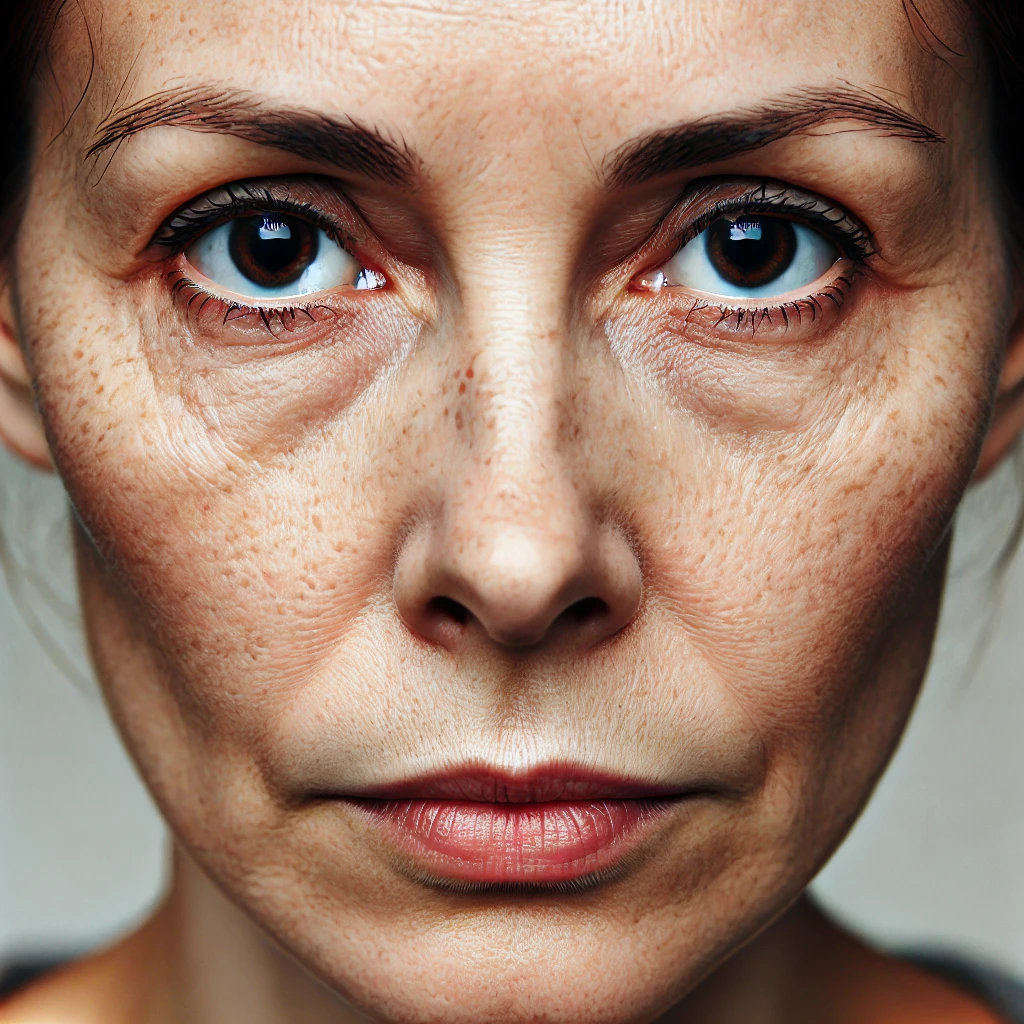“Cortisol Face” and Menopause: Why Your Hormones Are Messing with Your Glow (and What You Can Do About It)

Ever catch yourself in the mirror and think, Wait, did I age overnight? Or wonder why your face looks puffier than usual, like you had a late-night nacho party you don’t remember? Well, friend, it’s not just time playing tricks on you — it might be your stress hormone, cortisol, making a grand entrance. If your hormones already feel like they’re hosting a wild afterparty during menopause, cortisol is likely their DJ, spinning tracks that keep the chaos going. But the good news? There are ways to turn down the volume.
In this article, we’re diving into what cortisol face is, why it shows up during menopause, and, most importantly, how you can regain control.
What Exactly Is Cortisol Face?

Cortisol is the hormone your body releases when you’re stressed. It’s helpful when you need to escape a threat (like a saber-tooth tiger… or, let’s be real, a forgotten work deadline). But when cortisol stays elevated for too long, your body starts showing signs — especially on your face.
“Cortisol face” refers to these subtle but annoying changes:
- Puffiness or “moon face” (your cheeks seem fuller, even without cake)
- Random breakouts (weren’t we done with pimples after high school?)
- Dark circles and droopy eyelids (hello, sleepless nights)
- New wrinkles and fine lines (like they popped up overnight)
- Facial swelling (even when the rest of you feels fairly normal)
Sound familiar? If you’re going through menopause, this can feel like just another thing piled onto an already overflowing plate. But these changes are not just cosmetic — they’re your body waving a little red flag, saying, “Help, I’m stressed!”
How Does Cortisol Mess with Your Health During Menopause?
When estrogen and progesterone dip, your body becomes more sensitive to stress. In response, cortisol levels can shoot through the roof, throwing off your system and worsening menopause symptoms like:
1. Weight Gain Around Your Middle (and Nowhere Else)
Menopause is already notorious for making it harder to shed those extra pounds. But with cortisol running the show, belly fat becomes a stubborn companion. Even if your diet is on point, your body’s stress response signals it to store fat — usually right where your jeans fit the tightest. And face puffiness? That’s cortisol giving you a little extra water retention for good measure.
2. Mood Swings and Anxiety
Ever feel like the smallest things set you off? High cortisol ramps up anxiety and moodiness, which fluctuating hormones only make worse. One moment you’re zen, the next you’re snapping at someone for using the “wrong” coffee mug.
3. Sleep Problems
Progesterone, the hormone that helps you chill out and sleep soundly, drops during menopause. With cortisol hanging around, it’s harder to fall asleep and stay there. And the less sleep you get, the more stressed you feel — a vicious cycle that keeps cortisol elevated.
4. Hot Flashes and Night Sweats
Stress doesn’t just mess with your mood — it can crank up hot flashes and night sweats, too. It’s like your body is staging a one-woman protest against peace and comfort, leaving you sweaty and irritable at 3 a.m.
5. Dry Skin, Wrinkles, and Thinning Hair
Cortisol breaks down collagen — the magic stuff that keeps your skin plump and your hair healthy. So, say hello to more fine lines, dry patches, and hair that feels thinner than ever.
6. Brain Fog and Memory Lapses
Ever lose your train of thought mid-sentence? High cortisol can mess with the hippocampus, the part of your brain that handles memory and learning. Suddenly, even simple tasks feel like mental gymnastics.
How to Lower Cortisol and Get Back to Feeling Like You
Luckily, you don’t have to be at cortisol’s mercy. A few small changes to your daily routine can help you hit the reset button on stress and feel more balanced.
1. Move Your Body — But Gently
Skip the intense workouts, which can temporarily raise cortisol. Instead, try activities like walking, yoga, or swimming. These low-impact exercises help reduce stress without taxing your body further.
2. Prioritize Sleep (Even If It’s Tricky)
Aim for 7–9 hours of sleep a night, and build a bedtime routine you love. Think herbal tea, a good book, and no screens at least 30 minutes before bed. Sleep is when your body repairs itself, so give it a chance!
3. Practice Mindfulness
Mindfulness doesn’t have to mean hour-long meditations. Even five minutes a day of deep breathing, journaling, or guided meditation can calm your mind and reduce cortisol levels. Small rituals make a big difference.
4. Eat to Support Your Hormones
What you eat plays a major role in how you feel. Try adding these cortisol-balancing foods to your meals:
- Magnesium-rich foods: Spinach, almonds, avocados
- Omega-3s: Salmon, chia seeds, walnuts
- Antioxidants: Berries, dark chocolate (yes, chocolate!)
And cut back on sugar and caffeine, which can spike cortisol and mess with your mood.
5. Explore Adaptogens and Supplements
Adaptogenic herbs like ashwagandha, Rhodiola rosea, and holy basil can help balance cortisol levels. Supplements like magnesium and melatonin might also support better sleep and stress relief.
6. Talk to a Professional
If stress feels overwhelming, don’t hesitate to reach out to a therapist. Cognitive Behavioral Therapy (CBT) is a great tool for managing stress and reshaping negative thought patterns.
7. Consider Hormone Replacement Therapy (HRT)
If menopause symptoms are making life miserable, talk to your doctor about HRT. It can help restore hormonal balance and reduce cortisol-related symptoms, like mood swings and weight gain.
Wrapping It All Up
So, what’s the deal with “cortisol face”? It’s your body’s way of saying, “Hey, slow down!” Menopause is tough enough without stress taking a front-row seat. But with a few mindful changes — like better sleep, gentle movement, and cortisol-balancing foods — you can feel more like yourself again.
Got your own tips for managing stress or menopause symptoms? Share them in the comments! After all, we’re in this together — and every little bit of advice helps.
